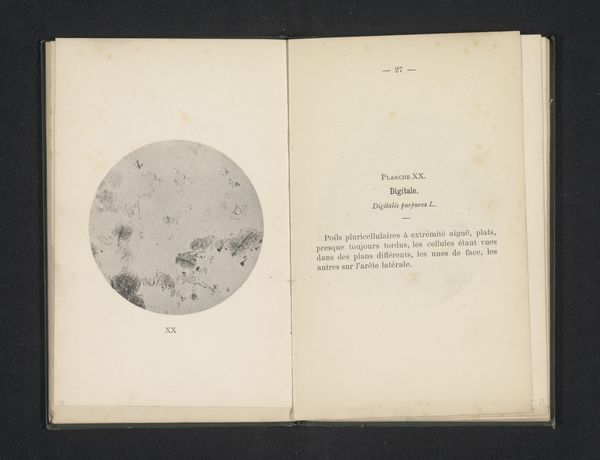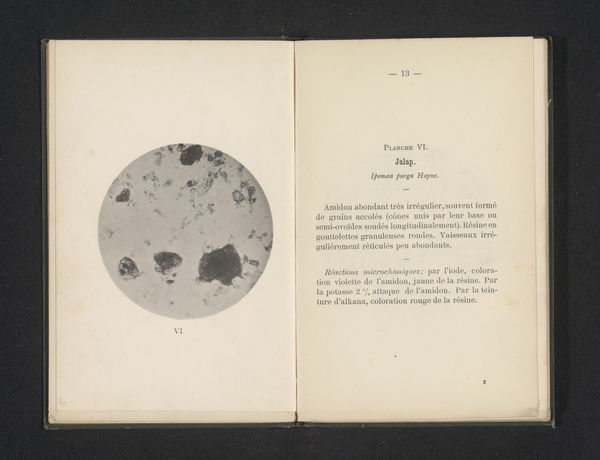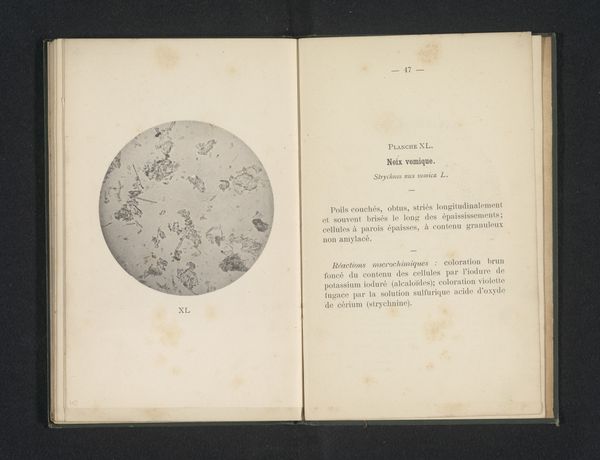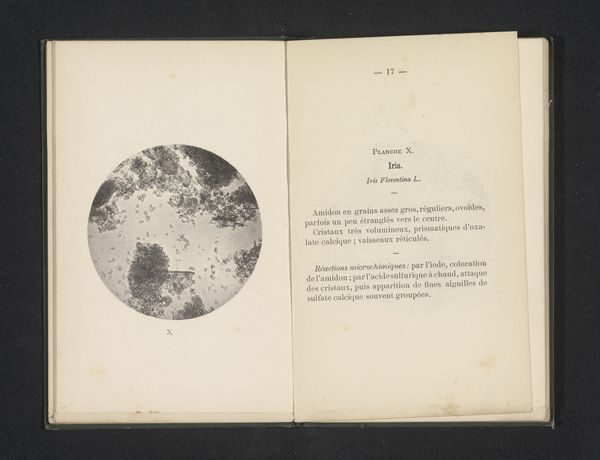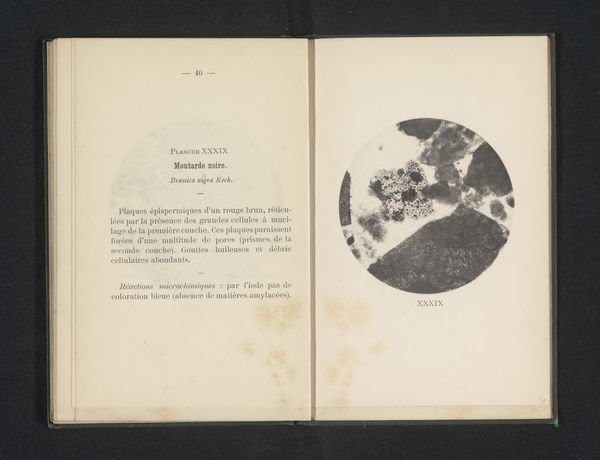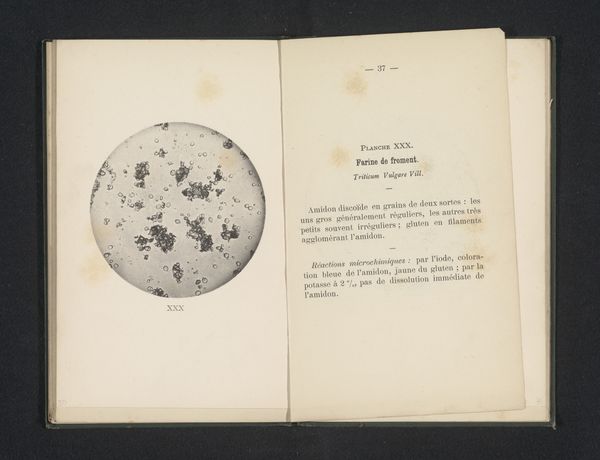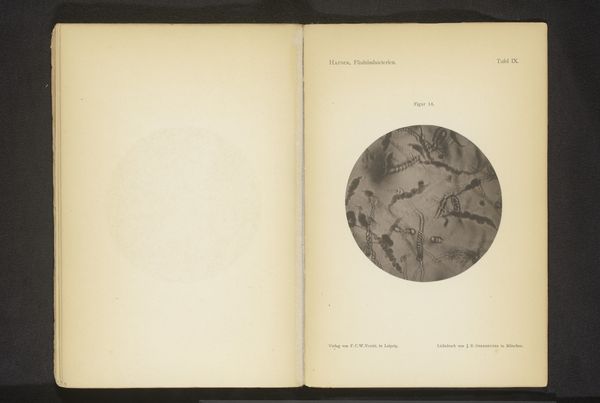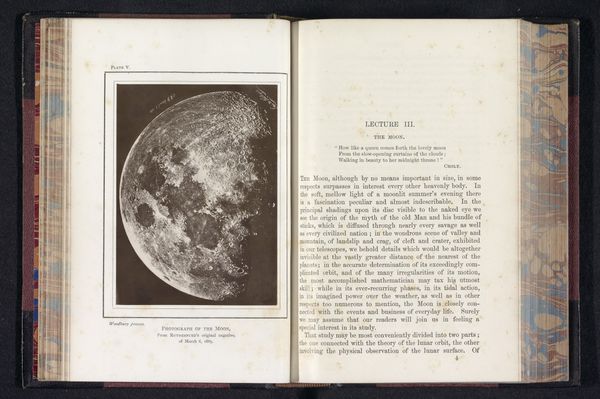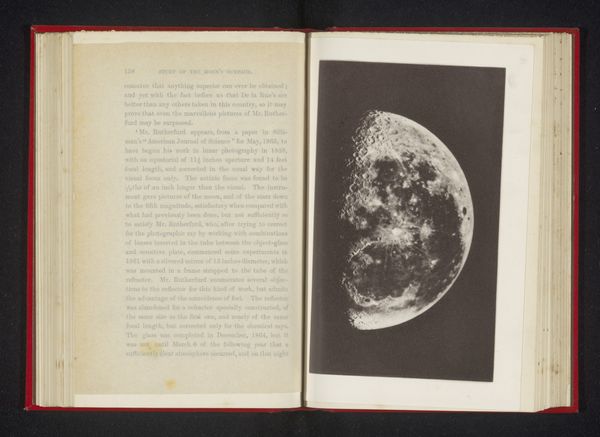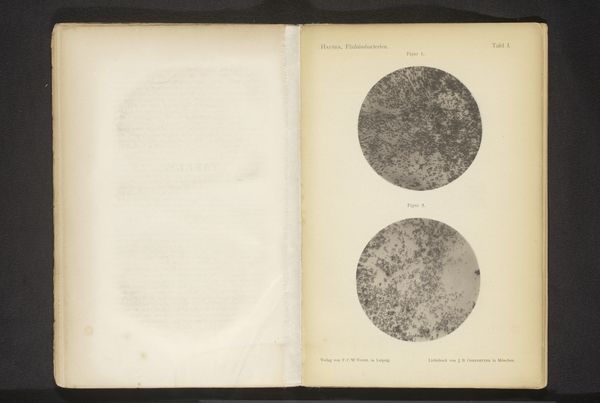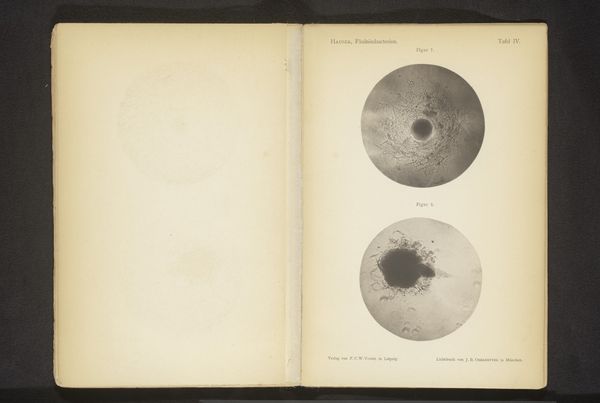
drawing, print, paper
#
drawing
#
aged paper
#
homemade paper
#
paper non-digital material
#
paperlike
# print
#
sketch book
#
personal journal design
#
paper
#
personal sketchbook
#
journal
#
thick font
#
historical font
Dimensions: height 81 mm, width 81 mm
Copyright: Rijks Museum: Open Domain
Curator: Looking at these open pages, the illustration to the left appears like a celestial body seen through a telescope, yet its organic forms and minute detailing suggest a close study of terrestrial matter. Editor: It's evocative, isn't it? It reminds me of an early photograph of a nebula—something seen for the first time through new technologies, blurry and profound. But there's also something undeniably scientific about the arrangement of elements on the page. Curator: Absolutely. We're looking at a plate titled "Microscopische weergave van Juniperus Sabina"—a microscopic representation of Juniperus Sabina, or, more commonly known as Savin Juniper. It’s by Léon Herlant and was created before 1896. Editor: Juniper. Well, that grounds the ethereal impression, doesn't it? How was this plate originally circulated? Curator: It comes from an age where the boundaries between art and science were more porous, serving perhaps an educational purpose, intended for students of botany or medicine, rather than art aficionados. It reflects an imperialist impulse of collecting and naming as part of our knowledge acquisition. Editor: So it's essentially a deconstruction—a microscopic, almost abstracted view of a very familiar, perhaps even culturally loaded plant, as Juniper holds significant symbolic weight in various traditions...a symbol of protection and purification. The details clustered around a central mass remind me of alchemical symbols and arcane texts. Curator: Indeed. I’m struck by how the circular vignette on the left and the text on the right serve to create a binary, much like how our own brains perceive and process. This division between the observational, objective view and the descriptive linguistic representation reminds us of how humans came to know about nature, both systematically and individually. Editor: In a world saturated with perfect digital renderings, there's a palpable honesty to its creation, where imperfections add to its narrative and force us to appreciate the painstaking labour required to render such scientific imagery by hand. It’s fascinating to observe what previous generations chose to document and archive as important information to disseminate. Curator: Precisely. What was valued, what knowledge was seen as crucial to pass down. This image encapsulates an era of profound discoveries. Editor: Thank you, this really gave me a different perspective on how scientific observation and human symbolic systems work.
Comments
No comments
Be the first to comment and join the conversation on the ultimate creative platform.
